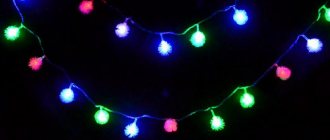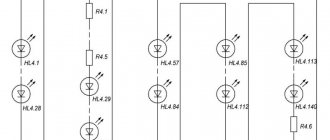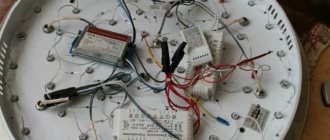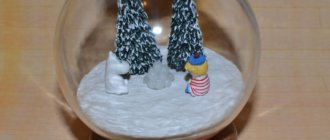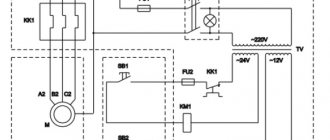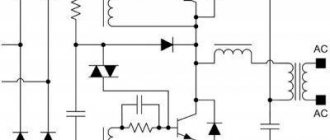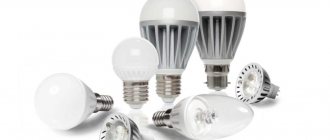A garland of incandescent light bulbs, also called a retro garland, is used to decorate any festive event in a restaurant or in a private home. It is placed under canopies, in gazebos and tents, a certain area is allocated (for example, for a photo shoot), and fences are decorated. You can make an elegant and unusual retro garland that creates an unusual atmosphere with your own hands.
Peculiarities
Modern industry readily supplies such products. But the external effect does not always satisfy consumer needs. In some cases, the use of retro garlands, which you can even make yourself, brings very good results. Before such work, it is very important to prepare properly and select suitable design ideas. Finding suitable design options and photographs is very easy.
There are a few things to think about:
- will it be possible to fit the product into the decor;
- will it be possible to implement the plan using available components;
- how much is it.
Popular option
Garlands of Edison light bulbs allow you to create an unusually interesting composition. They fit well even into very modern interiors and look much more original there than many of the latest designs. The appearance is more reminiscent of incandescent lamps (yes, the same ones that were used a very long time ago). Depending on the design of the designers, lamps may or may not be equipped with lampshades.
Regardless of whether there is a lampshade or not, the external attractiveness is not weakened. Tungsten thread is large in size, and it is with it that increased aesthetic characteristics are associated. What is important is that the lamps do not contain toxic mercury and in this regard are better than energy-saving designs. Consumers are pleased with the fact that the color spectrum of the radiation completely coincides with the spectrum of sunlight.
There are several weaknesses:
- high cost;
- short duration of operation;
- significant current consumption;
- strong heating of the outer shell of the flask (danger of burns and fires).
Selection of necessary materials and components
To make your own LED garland, you will need the following tools, materials and components:
- soldering iron with rosin and solder;
- insulating tape;
- heat-shrinkable casings that increase insulating properties;
- LEDs;
- resistors.
LEDs can be obtained by disassembling non-working computer accessories - keyboards and mice. The correct functionality of a homemade garland depends on the quality of the selected components and connections and the reliability of the operating scheme.
When diodes are connected in series, they will work, but the voltage will increase significantly, which will increase the amount of heat generated, and ultimately lead to failure of the device. This is the main reason for the use of resistors, which reduce the voltage and change other input current characteristics, due to which the color changes when the sources glow.
LED selection
The main elements of the garland are LEDs. The main technical and operational parameters are considered to be operating voltage and current flowing in the forward direction. Both characteristics will be needed to calculate the electrical circuit and electricity consumption.
On average, an LED operates at a current of 20 mA. To reduce the amount of electricity consumed, resistors are used, and the resistance value of this element depends on the parameters of a particular LED diode. You can find many calculators on the Internet that allow you to perform a simple and quick calculation of the resistor for the selected LED.
The supply voltage of the element indicates the moment when the voltage drops at the pn junction, which occurs due to the internal resistance of the product. In other words, if we are talking about a 12 V power supply and 3 V LEDs, then no more than four of these devices can be connected in series, since each of them reduces the supply voltage (12 V) by the value of its own (3 V). If you add a fifth element to the circuit, it will practically not glow.
The voltage depends on the specific manufacturer and LED colors. For example, diodes with blue, white and green crystals have an operating voltage of 3 V, yellow and red - 1.5-2.5 V. The power consumption of diodes is calculated according to one of Ohm’s laws: P = U * I, where P is power , U and I are voltage and current, respectively.
If we consider the values given above, then when we substitute them into the formula we get the following value: 3 (V) * 0.02 (A) = 0.06 W. When 4 LEDs are connected in series, this characteristic will increase to 0.06 * 4 = 0.24 W. When a limiting resistor is connected in series, the voltage will increase by another 0.06 W, so the total power consumption will be 0.30 W. If you use several groups of 3 LEDs that are connected in parallel, then this value must be multiplied by their number.
The luminous intensity of a red 1.8 V LED diode is 0.2-2.0 cd, white - 10-20 cd. However, these characteristics do not make any adjustments to the calculation scheme and are selected solely based on the purposes of further operation of the device.
Resistor selection
When choosing resistors, you need to focus on power and resistance. The second parameter depends on the number of LEDs connected in series to the circuit and their operating voltage, the power depends on the current value. Using a 0.125 W resistor will almost always be sufficient.
When operating 3 V LEDs, it is customary to use resistors with the following resistance depending on the number of elements:
- 1 LED – 470 Ohm;
- 2 – 300 Ohm;
- 3 – 150 Ohm;
- 4 – 1 Ohm.
If you plan to operate diodes with a voltage of 2.1 V, then the relationship will be as follows:
- 1 LED – 510 Ohm;
- 2 – 390 Ohm;
- 3 – 300 Ohm;
- 4 – 180 Ohm;
- 5 – 75 Ohm.
Selecting a power supply
In the case of an LED garland, a 12 or 24 V power supply with a reserve of output power (approximately 25% on top of the total power consumed by the circuit) must be used. The choice of a specific block depends on the number of LEDs - for a circuit with 7 or more elements, it is advisable to use a 24 V product.
The 24 W unit allows you to switch 11 series-connected 2.1 V diodes or 6 3 W diodes. It will almost always be enough to use a small power supply with a voltage of 24 V and a current of 0.5 A with an output power of 12 V.
How to do it: step by step instructions
Outdoor garlands based on retro lamps can decorate both your home and garden. All work can be easily done with your own hands.
The basic parts for craftsmen will be:
All these elements are present in any created configuration, no matter what technical and design decisions are made. Otherwise, the scope for human imagination is practically unlimited. From the very beginning, you should consider how far the lamps will be placed from each other. It is important to remember that after all the work is completed they will be a little closer. It is recommended to space the backlight points by 650-700 mm, although the distance may vary depending on the design concept and the specific task.
Next, when preparing a garland for home or outdoor use, the wire is folded in half and its edges are wrapped with insulating tape. Whether it is blue or black does not really matter, except for aesthetic reasons. Then they take pliers and bite through the cover casing, exposing the conductive core. If there are no special pliers, you can use a knife to destroy the insulation. When this work is completed, it is time to install the cartridges.
Using a regular nail, tighten the loops where the insulating layer was removed. Do not forget, of course, that at this moment the structure must be de-energized. A pair of conductors is inserted into the rear of the cartridge. The screw is fixed only after connecting the elements with electrical contacts. At the same time, be sure to ensure that the nut does not come out even a little.
LED garland diagram
The AC mains voltage is supplied to the power controller through resistors and a diode bridge, already rectified and smoothed through a capacitor.
In this case, this voltage is supplied through the button, which is open in the normal state. When you close it, the controller modes switch.
The controller in turn controls the thyristors. Their number depends on the number of backlight channels. And after the thyristors, the output power goes directly to the LEDs in the garland.
The more such outputs, the more varied the colors the product can have. If there are only two of them, this means that only two parts (or halves) of the garland will work in different modes - some bulbs will go out, others will light up, etc.
In fact, these two lines of diodes will be connected on two channels in series. They will connect to each other at the end point - the last LED.
If for some reason you are annoyed by the blinking of the garland and you want it to glow evenly with only one color, it is enough to short-circuit the cathode and anode of the thyristor on the back side of the board using soldering.
The more expensive the garland you have, the more outgoing channels and wiring will leave the control board.
At the same time, if you follow the traces of the board, one of the mains voltage outputs is always supplied directly to the final LED of the garland, bypassing all elements of the circuit.
Selection of Edison lamps
These designs can differ significantly from each other. They can be installed in lamps instead of conventional light sources. But in this case, you will have to check how they are combined technically and aesthetically. Another consideration: matching the style of the room or the facade of the house. If the design is in a classic spirit, a good way to emphasize this is to choose products complemented by decorating cords.
Open Edison lamps are not suitable for outdoors and damp rooms. They may look quite elegant, but safety considerations should not be forgotten. Next, you need to focus on the general illumination of a particular place so that it is not too dark and does not create a blinding effect. As with other products, selection by manufacturer is of great importance. Not all companies supply equally high-quality products - you need to pay attention to reviews and the duration of presence on the market.
The garland shines dimly
There are also not entirely obvious accidents, when the LEDs of a separate channel seem to be on, but rather dimly compared to the others.
What does it mean? The controller circuit is working fine. When you press the button, all modes are switched.
Testing the parameters of the diode bridge and resistance with a tester also does not reveal any problems. In this case, the only thing left to blame is the wires. They are already quite frail, and when such a multi-core wire breaks, its cross-section decreases even more.
As a result, the garland is simply not capable of starting the LEDs in the nominal brightness mode, since they simply do not have enough voltage. How to find this torn vein in a long garland?
To do this, you will have to walk along the entire line with your hands. Turn on the garland and start moving the wires near each LED until all the backlight lights up at full strength.
Why is the Christmas tree garland shining dimly?
Why is the Christmas tree garland shining dimly?
According to Murphy's Law, this may be the very last piece of garland, so be patient.
As soon as you find this area, pick up a soldering iron and disassemble the wires on the LED. Clean them with a lighter and solder everything again.
Then insulate the soldering area with heat shrink.
Additional recommendations
Experienced professionals advise using:
- PV series wires with many cores;
- homemade boxes for decorating dimmers;
- carbolite cartridges;
- matte spherical light bulbs with a power of 25-40 W.
Soldering irons and accessories for them, markers, and electric drills may be required for work. It is better to take the wire with some reserve; reserve should also be left for the dimmer power. A marker is used to mark the desired boundaries and connections on the folded wire. All places where contacts are attached must be fixed firmly, but without excessive load. The lamps are connected in a parallel circuit so that the failure of one does not disrupt the operation of the rest of the garland.
Unusual option
Instead of mains power, sometimes you need to make a battery-powered garland. In this case, even a sudden power outage will not be an unpleasant surprise. Lithium-based batteries are usually used. The recommended voltage is 3 V (no longer necessary). The diode mounts are attached to the batteries using epoxy glue.
Similar designs can be used for a veranda or hung on an arch, as well as on another decorative element in the garden. Typically, the anode is attached to the positive pole, and the cathode, respectively, to the negative part of the battery. After the glue has set, you need to strengthen the connection by wrapping it with tape. It is recommended to use from 10 to 20 light bulbs in such a garland. If there are fewer of them, there will be no aesthetic effect. If it’s more, the complexity of the work will increase unjustifiably.
Finally, it’s worth mentioning the basic safety rules when using homemade garlands:
- you should not place them where splashes of water will occur at least periodically;
- it is necessary to clearly understand the difference between indoor and outdoor decorative elements both when designing and when hanging;
- You cannot install garlands in aisles or in places where water or snow can fall on them;
- It is unacceptable to install such structures close to the ground or very low, since it is easy to get caught on them or tear them;
- each garland must be connected to a strictly separate outlet;
- Before connecting, you need to check the serviceability of sockets, decorative lamps and insulation.
To learn how to quickly make a retro garland, see the following video.
Garlands with LEDs
All the circuits shown above were built using miniature low voltage (3-24V) incandescent light bulbs. They are fully suitable for retro garlands produced up to the 90s of the last century. However, today the bulk of electric garlands are built on the basis of LEDs. Indeed, LEDs consume less power while producing more light and providing brighter, purer colors. What changes in the schemes?
Actually, nothing significant. Except for one nuance: since, unlike an incandescent lamp, the LED must be powered not by a stable voltage, but by a stable current, any circuits with LEDs must have a current stabilizer or a current-limiting element (in the simplest case, a resistor).
4.1. Garlands with sequential inclusion of LEDs
When several LEDs are connected in series to a constant voltage source, two main conditions must be met:
N × ULED < Uc and I = Uс / [N × (ULED /ILED ) + R) < ILED ,
where N is the number of LEDs in the chain, ULED is the rated voltage drop across the LED, Uc is the network voltage (230V), ILED is the rated current of one LED, I is the total current in the garland circuit, R is the resistance of the ballast resistor. The circuit in this case will look as shown in Fig. 16:
The power of the resistor must be selected in such a way that it does not overheat when the garland is operating. Incorrect selection of a resistor (which, unfortunately, sometimes occurs with Chinese handicraft garlands) can even lead to the garland catching fire!
How to make a cool garland from incandescent lamps?
A garland of incandescent light bulbs, also called a retro garland, is used to decorate any festive event in a restaurant or in a private home. It is placed under canopies, in gazebos and tents, a certain area is allocated (for example, for a photo shoot), and fences are decorated. You can make an elegant and unusual retro garland that creates an unusual atmosphere with your own hands.
What will you need to make a garland?
To make a garland of light bulbs with your own hands, you need the following materials and tools:
- PV wire 1×0.75 (stranded single with a cross-section of 0.75 mm²), it is important that the wire is soft but can hold its shape;
- 25 W light bulbs with E14 or E27 socket (they shine brightly and are economical);
- carbolite, plastic or porcelain sockets corresponding to the lamps;
- fork;
- rotary switch (dimmer) to change the brightness of the light;
- wire cutters;
- sharp knife;
- marker;
- insulating tape;
- drill or screwdriver;
- screwdrivers - flat and Phillips;
- tailor's meter (it is convenient for measuring curved wire);
- nail;
- multimeter (tester).
The length of the garland is determined depending on the place where it is intended to be used. The wire can be black, white, colored is rare. It must match the color of the cartridges. For a garland 5 m long, you will need 7 lamps, 7 sockets for them, 14-15 m of wire, of which 10 m are the main ones, and the rest is needed as a reserve for connecting to an outlet. If E12 lamps are used, an adapter will be required.
What else do you need to know?
There are several important points that are also worth considering:
- To make a garland with running lights, you need to purchase a three-phase multivibrator. It only works with LED equipment.
- For outdoor use, use only diode products; it is best to additionally protect the connections with heat-shrink tubing, and place the socket and control unit indoors. An outdoor garland should be an order of magnitude stronger than a home one.
- If there is an old garland that is not working, it can be repaired. To do this, first remove the power supply, measure the diameter of the used diodes to find out their characteristics via the Internet. The power of the resistor is calculated, it is soldered in place of the block, after which you can turn on the lights.
Step-by-step instruction
To assemble a garland of light bulbs with your own hands, you do not have to be a professional electrician. The instructions are designed for parallel connection of lamps.
Preparing twisted wire
The basis of the retro-style garland is a twisted wire, similar to the one that was actively used for external wiring until the middle of the last century. The cables are intertwined like this:
- Fold in half, cut, lay out, align the ends and secure them with a tie.
- 1 end is attached to a bent nail inserted into a drill, the second is tied at a distance to some object - a hook, a table leg.
- Turn on the drill. From a simple wire 15 m long you get 7.3-7.4 m retro.
- Without removing it from the hooks, knead the cable slightly along its entire length and let it lie for a while in such a position that all the wires are fixed in a new shape.
Wire processing
At this stage, the points where the lamps will hang are determined and prepared for connection:
- Measure out a section of at least 1.5 m for connection to the socket on one side of the cable. Choose the design option for the other side; it can end with a lamp or an additional socket.
- Measure and mark with a self-adhesive marker the location of the lamps (depending on the size, they are placed in increments of 45-60 cm). It is better to make markings along the entire length of the product at once in order to adjust the distance between the elements.
- Insert a flathead screwdriver at the marked point and push the cables apart so that a ring-shaped section is formed between them.
- They expose 1-1.5 cm in the center of both wires opposite each other using a stripper or knife. The insulation layer is removed carefully so as not to damage the conductors.
- Twist the exposed areas into loops using a screwdriver or thin nail.
As a result of processing, sections with loops arranged in pairs appear on the cable; a cartridge will be attached to each pair.
Fork
The plug is selected according to its appearance, without grounding. First you need to disassemble it and then connect it to the cable:
- Expose the ends of the wires by 1.5 cm. The part that will be pressed by the clamp should remain insulated, this will protect the cable from severe kinks.
- Clamp the ends of the wires with the fixing screws so that the exposed parts do not touch each other.
- Put on and secure the cover.
If you plan to make a garland with a dimmer, you will also need a connecting block that quickly provides contact and good insulation. Loosen the screws in the block (4 pieces), then insert the garland wires into the sleeve channels on one side, and dimmers on the other, and tighten the screws.
It is better to purchase a dimmer with a cable and plug - it is easier to install (according to the technology, connection to the device is carried out by soldering).
Installation of cartridges
In a garland, it does not matter which cable is connected to which contact. For retro-style products, old-style cartridges are more suitable - carbolite, which consist of 3 parts:
- cylindrical body with thread;
- bottom (skirt);
- ceramic liner.
The cable is passed through the bottom of the cartridge, the wires twisted into loops are put on the contacts of the ceramic insert and secured with screws so that the exposed parts do not touch each other. Then the housing is screwed on.
Connection
The garland, which is a wire without breaks, is reliable when stretched and sagged. It is designed for 220 volts. It is recommended to check each lamp for integrity using a multimeter before screwing it in. Only after this can it be included in the network.
What types of retro garlands are there?
Although an electric garland implies the New Year and is associated mainly with a decorated Christmas tree (it is not for nothing that it is also called a Christmas tree or New Year's tree), but now, as before, the garland can be found everywhere at any time of the year. This simple device was and is used to decorate shop windows and building facades; it can also be an element of the interior.
In this regard, retro products are of particular interest, since modern devices with microscopic LEDs and constant blinking have somehow become boring. How do retro garlands differ from modern ones? First of all, the size of the light sources. A modern option is a wiring harness on which the lamps are practically invisible until you turn on the garland itself.
Classic modern garland
The retro option is primarily large light bulbs. They are usually large and clearly visible even when turned off. The open and unsightly cartridge gives a special charm to such a product.
Retro made of open incandescent lamps
Even if the light bulbs are small, they are fitted with all sorts of fairly large diffusers and caps.
Retro with light bulbs closed with caps
Further, the retro garland does not replete with all the colors of the rainbow, causing the eyes to crawl out of their sockets. Often in the past, lamps were not painted at all, and if they were painted, it was in several soft, desaturated colors.
Thanks to this, the garland did not hit the eyes like its modern counterpart, but glowed softly, creating a calm (and I mean calm) holiday atmosphere.
And now some examples of using retro garlands as decoration.
Retro garlands in the interior
Retro devices in landscape design and as facade decoration
Ideas for assembling a garland with your own hands
Now we’ll find out how to make a retro garland of light bulbs with your own hands. After all, it’s cheaper and, most importantly, more interesting than buying in a store. I offer several options.
From 220 volt lamps
To make a retro garland with incandescent lamps we will need:
- 220 V light bulbs with a power of 10-40 W;
- sockets for the base of the selected light bulbs;
- the wire;
- mains plug;
- heat shrink tube or Moment glue or similar;
- tools - knife, screwdriver.
Bulbs can be taken with either a standard E27 base or a miniature E14 base.
Light bulb with base E27 (left) and E14
The number of devices can be any. The so-called Edison lamps will look especially original, but, alas, they are quite expensive.
Filament “Edison lamp” Important! When choosing light bulbs, keep in mind that their power will add up to each other. So, a garland of ten hundred parts will consume 1 kW. That is why I recommended taking light bulbs of minimal power. After all, this is a decorative device, not a lighting complex.
The wire can be any flexible, designed for a voltage of 220 V, with a core cross-section of about 1 mm. sq. (depends on the total power of the light bulbs).
It’s better to take a twisted one in cotton braiding – it looks more “retro”. The length of the wire depends on the number of bulbs.
Guide yourself approximately like this: 1 meter of wire for 2 light bulbs and an additional meter or two (three, four - as needed) to the power plug.
This wire is best suited for retro garland
Before we start assembling, let’s draw a diagram of the future garland. Since we chose the lamps for an operating voltage of 220 V, we will connect them in parallel.
Electrical circuit of a retro garland with 220 volt light bulbs
Healthy. Parallel connection of light bulbs has a huge advantage over serial connection. If one of the bulbs burns out, all the others will continue to shine. With a series connection, the failure of one lamp extinguishes everything.
So, everything is clear with the diagram - it is extremely simple, let's start assembling the retro garland. Let's say we have 10 light bulbs. We measure and cut 9 pieces of wire, each half a meter long.
If you want to place the lamps more closely, this length can be reduced. Additionally, we cut off a piece that will be located between the first light bulb and the power plug.
Its length depends on how far the garland will be from the outlet.
Marking and cutting wire
Using a knife, we strip all the wires on both sides to a length of 8-10 mm. To prevent the cotton shell from unraveling, we put a heat-shrink tube on the wire and shrink it using a lighter.
Fixing the braid with heat shrink tubing
If there is no heat shrink, simply coat the cut ends of the shell with “Moment” type glue. Anything that remains elastic after drying will do. Of course, you will have to wait a little until the glue dries, but the result will be no worse, and maybe even better, than with heat shrink.
Now let's assemble the diagram. We disassemble each cartridge and fix the wires in it - input and output, connecting them in parallel. In the first cartridge, the input wire will be the supply wire; we will later attach a plug to it; in the last, of course, there will be no output wire.
Installation of 220 V light bulb sockets
Now we mount a power plug on the input wire. Screw in all light bulb sockets.
The final stage of installation of the garland
If everything is ready, then plug our garland into the outlet, all the lights should light up.
The result of our work is a finished retro garland of 220 V light bulbs
Retro garland of LEDs and tennis balls
LEDs are modern lighting devices, but they can also be given a “retro” look. As I said above, the main condition is large light sources. Therefore, we will equip our LED garland with large lampshades. But first it needs to be done. To make a retro garland you will need:
- multi-colored indicator LEDs of any type;
- 180 Ohm resistors (according to the number of LEDs);
- tennis balls (the same number as LEDs);
- heat-shrink tubing;
- two-core wire (preferably with different colors of cores);
- stationery knife;
- hot glue gun;
- adapter from any gadget with an output voltage of 5 V;
- soldering iron
We will connect the LEDs in the same way as 220 V light bulbs, but we will add a current-limiting resistor to each. We will power the entire structure with a voltage of 5 V.
Electrical circuit of an LED garland
The assembly process is extremely simple, and I will only describe it briefly.
We cut off the leads of the LEDs and resistors, leaving 5 mm, and solder a resistor to the anode of each LED.
We assemble the circuit by first cutting the wires to the required length and observing the polarity: resistors to resistors, LED cathodes to cathodes. That is why I recommended taking a wire with colored cores.
LED garland assembly diagram
We insulate the leads and the resistor with pieces of heat-shrinkable tubing, which we first put on the wires. And, in principle, the garland is ready.
All that remains is to turn it retro, for which we use tennis balls that will act as lampshades.
Additional recommendations
A retro-style garland with incandescent lamps cannot be used in the following conditions:
- under snow, rain, temperature changes (the bulbs will burst or a short circuit will occur);
- near flammable materials (paper, fabric);
- leave it turned on unattended for a long time, for example, at night;
- install on the ground or a short distance from it, because It's easy to get caught and break the wire.
Plastic sockets have cable terminals that are not designed to support more than the weight of the lamp and socket. Therefore, when using them, you need to attach a garland every 1.5 m.
It is not recommended to connect elements in series when making a garland, because the power consumption of each subsequent lamp will be less than the previous one, for example, out of 15 lamps, only the first 3-4 will shine brightly. And if 1 lamp burns out, the circuit is broken and all the others go out.
When connected in parallel, lamps of different sizes and power can be screwed into one garland. If you want to make 1 long decoration, you need to take into account the power of the power source. The standard plug and socket are designed for a load of 5 A (1 kW). If there are several garlands, each should be connected to a separate outlet.
Lamps can be painted with watercolors or gouache. Store the garland in a box, avoiding mechanical pressure.
How to choose illumination for outdoor use
Although any electrical devices should be chosen wisely, since they are potentially fire hazardous, outdoor New Year's illuminations require special attention.
They will have to be operated under high load conditions. These are temperature changes, especially frost, high humidity, potential shocks and stretches. Battery-powered LED Christmas tree lights are more reliable in every sense. It can withstand up to 100,000 hours of operation if the operating rules are followed. Tiny LEDs are enclosed in housings that are almost impossible to damage.
They shine brightly enough, but do not heat up. This means that there is no risk of the tree catching fire. You can actually build the simplest lighting structures of this type with your own hands.
You should choose the right New Year's garlands according to the type of wire. There are different options: individual LEDs are attached to a PVC cable. Traditionally, this solution is welcome for interior illumination: wire of this type is relatively poorly resistant to temperature changes and atmospheric influences.
A newer word in electrical engineering is rubber and silicone cables. They are highly durable, resistant to moisture, low and high temperatures. They can also be considered reliably protected from possible mechanical damage. And this means safety in operation: the risk of electric shock is eliminated. However, using battery-powered illuminations, you don’t have to worry about such a threat in principle.
The best solution is a silicone LED garland. It can withstand frost up to 50 degrees. High humidity also does not harm this material. For comparison, it is worth pointing out that a high-quality PVC cable is designed for -20 degrees maximum.
Advantages and disadvantages
Before you make a garland of LEDs with your own hands, you need to accurately determine its purpose. To do this, you will need to take into account all the advantages and disadvantages that may affect the performance of the New Year's decoration.
Among the positive aspects of using such garlands, it is worth highlighting the following:
- Long service life. High-quality lighting devices can operate for 10 years. This figure is significantly higher than that of New Year's decorations made from ordinary lamps.
- Minimum amount of electricity consumed. This type of garlands is considered one of the most economical. LEDs consume 10 times less energy than incandescent light bulbs. At the same time, the brightness of the light they produce is not inferior to outdated analogues.
- High safety indicators. High-quality LED garlands operate at a voltage of 12 V and practically do not heat up. Such features help reduce the likelihood of fires to a minimum. In addition, the likelihood of electric shock is almost completely eliminated.
- High brightness. Garlands of LEDs always shine very brightly. Because of this, they are made compact, which allows you to decorate even small objects.
- Light weight. Thanks to their minimal dimensions, these luminous decorations are very light. This advantage allows you to hang the garland on thin interior items or small tree branches.
- Parallel connection. This allows the garland of lamps to work even if problems occur in one or more links of the chain. Older jewelry used a series connection, and if one of the bulbs burned out, the entire device would fail.
- Ease of Management. All modern New Year's garlands can be adjusted using a special control unit or remote control. These devices allow you not only to turn the decoration on and off, but also to change the lighting modes.
- Durability and reliability. LED garlands are protected from mechanical influences and any other damage. This is ensured by high-quality coating of lamps with their strength characteristics.
Among the many advantages, there is one drawback. It lies in the slightly overpriced price of the garland. However, all financial costs will quickly pay off due to energy savings.
How to fix a garland if it blinks randomly in any mode
Reason 1. Capacitor failure
Drying, leaking or swelling of the electrolytic capacitor causes the controller to malfunction.
How to fix
Carefully inspect the capacitor. If it is swollen, darkened, or electrolyte leaks are visible on it, then replacement is necessary. Examine the case to find out the rating and voltage, and then find an analogue with parameters no less than the original ones. Carefully unsolder the old capacitor and install the new one, observing the polarity.
Burnt resistors also cause problems with the controller and unstable operation of the lighting modes.
How to fix
Check the resistance of the resistors with a multimeter and replace the faulty ones with working ones of the same value. If the parts are visually intact, it is still better to replace them to eliminate the malfunction.
DIY methods
The easiest option for obtaining jewelry is to purchase it. To do this, just visit a store that sells lighting fixtures or New Year's goods and choose the most suitable device. If you don’t have extra money, you can make an electric garland with your own hands. This option will be less expensive from a financial point of view, but more labor-intensive.
To connect to the mains
This method of making homemade jewelry is considered the simplest and most frequently used. It gained its popularity due to the minimal investment of time and money. A distinctive feature of such a garland is its connection to the mains via a special power supply. To make a New Year's attribute, you will need the following materials and tools:
Remembering childhood - creating from paper
The easiest way to make a DIY retro garland for the New Year can be made from plain paper. Even small children can cope with the task.
The simplest retro-style paper garland is a row of paper figures attached to a long thread. To make this decoration you need:
- Take several sheets of multi-colored paper, onto which the image of the desired figures is applied using a stencil.
- After this, the sheets are cut with scissors. You will have to cut out as many of these leaves as possible.
- When all the blank leaves are ready, take a long thick thread, onto which the leaves are glued with any glue, even the cheapest stationery glue will do.
Snake from a garland
Even a child who knows how to use scissors can do it. Making a snake involves cutting out a large paper circle and then cutting off a ribbon about 1 cm wide from it, starting from the edge, around the circumference to the very center.
Hanging decoration made from soft toys
Almost any family with a small child accumulates quite a few small soft toys that are perfect for creating an unusual decoration. By attaching these toys to a durable cord, you will receive an original, and most importantly unique, decoration in the form of a retro New Year's garland. You can complicate the task somewhat and, with a little effort, sew animal figurines yourself, but most likely not everyone will be able to do this.
From natural materials
If you think about homemade decoration in advance, you can make it from orange, tangerine or lemon peel. By cutting out small funny figures from the peel and stringing them on a strong thread, you can get not only an original decor, but also an excellent citrus aroma in the room. A beautiful decoration can also be made from pine cones or apples, especially if you combine them on one thread with figures made from citrus peel. However, in this case, you should experiment with the combination of smells.
Pompoms
You need to make a lot of fluffy pom-poms in bright colors, place them on a thick thread and decorate everything your heart desires with a soft retro garland.
Paper lanterns
Probably everyone made simple paper lanterns in childhood. If you make enough of them, and even from multi-colored paper, then hanging them on a long cord, you can get an excellent holiday garland.
Safety regulations
Despite the fact that garlands made from LED lamps are considered one of the safest, care must be taken when using them. This will help avoid unusual situations that could lead to electric shock and its negative consequences. To prevent this from happening, you must follow a few simple rules:
- All garlands used for decoration should be located high above the ground or floor. If you neglect this rule, you may accidentally tear the jewelry and receive an electric shock. In addition, such a precaution will protect small children and pets from contact with a potentially dangerous object.
- When using the garland outdoors, you need to tighten the wires well and make sure that they do not sag. Failure to comply with this condition may result in the appliance falling into a puddle. In addition, you can simply get caught on the wire and fall.
- It is recommended to use wires that are not too thin, as there is a possibility of rapid wear or chafing from external factors.
- It is imperative to check the garland for functionality. Only after this can it be hung on the New Year tree or any piece of furniture.
- It is prohibited to connect several garlands to one outlet at the same time. This may cause overheating and failure.
- You cannot leave home and leave the garland on. Such carelessness can lead to fire and other unforeseen situations.
- When decorating a holiday tree, you need to check the insulating layer of the wiring. If it has even minimal defects, then it is better to refuse such a garland. Otherwise, you can provoke the appearance of a spark, which will lead to a rapid ignition of the Christmas tree.
- If any emergency occurs, you must immediately turn off the power to the luminous decoration.
A garland of LED lamps is a wonderful decoration option for the entire apartment. They can be placed not only indoors, but also outside, which ensures maximum effect from observation from the outside. With proper manufacturing and compliance with safety precautions, you can reduce the risk of an unusual situation and avoid negative consequences. A well-made garland will delight all people and give them a festive atmosphere.
Homemade lamps - 40 interesting and tempting ideas
When planning finances during renovation, we often neglect the details that decorate the interior. As a result, we risk not getting what was planned at the beginning or what our imagination imagined. However, you can make a big difference if you use one of these homemade lamps in your interior.
A tight budget often means that the main criterion when choosing furniture becomes its cost. Making interior parts with your own hands will allow you to maintain the proper level without having to spend large sums.
Another reason to make your own lamps is to add uniqueness to your interior. During the manufacturing process, your individual preferences and your character will definitely become visible.
Each homemade lamp has its own unique character. Variety begins with the choice of materials. They range from glass, metal, acrylic to natural materials such as wood. Even paper and cardboard are used in production, they are quite popular.
Are you a fan of reusing and upcycling things? Then this is just what you need!
Don't be afraid to experiment! Try to create something that will truly attract and delight the eye.
Attractive old book lamp Unusual pendant light Beautiful paper lampshade Cup light Unusual spotlights Lamp with extra functionality Be creative with materials Ideal for industrial design Create your own designer lamp Interesting lighting for the home Kitchen inspiration
Paper pendant lamp Creates a great atmosphere Reviving old lamps in an original way Origami lamp Chic night light made from old film Delight your child
Marine motifs
Alice in Wonderland
Source: https://cpykami.ru/samodelnye-svetilniki/
Retro garland with incandescent lamps | Vintage Light String
Good afternoon. My name is Evgeny Sushnikov, it’s time to tell you how in our workshop I make cool, real garlands with lamps with my own hands. All the secrets, preparation, difficulties and moments of pleasure from the work done. I make to order.
Preparation
Ideas are in the air and live independently of our will, we just need to catch it, let’s take Plato at his word. We get inspired, come up with an idea, while looking at websites and blogs about design.
I use Tumblr for this, everyone posts pictures there and it’s easy to scroll, for example awelltraveledwoman, modernhepburn, thelittlefrenchbull, sweethomestyle, calmingcalamity I look at a friend’s feed with the tag https://evgenesushnikov.livejournal.com/friends/Design. Here's a website with a Swedish design: https://www.stadshem.se/. The same https://www.lookatme.ru. Interior, details, before/after, very cool, all night long https://www.designsponge.com/category/before-and-after.
I save interesting things in the “Repair, Do” folder, then I look through them and come up with ideas when I have free time. There are a lot of things, share your craft sites with “eidos” in the comments, I will be glad.
The idea is ready, let's materialize it. We spend half a day or a day shopping, scraping the bottom of the barrel and finding everything we need:
- PV wire 1 x 0.75 stranded single copper in white insulation with cross section 0.75
- A dimmer switch for a sconce that hangs on a wire or a regular one for walls + make a beautiful wooden box for it.
- Carbolite cartridges E14
- Regular frosted light bulbs, balls for 20 rubles. with E14 socket for 25W (at most 40W)
- Fork
- Screwdrivers: flat, small flat, Phillips
- Wire strippers, wire cutters, pliers
- Small electrician's knife with a short blade for convenience
- Soldering iron, soldering acid, tin
- Drill
- Two small nails
- Hot gun and silicone tubes for it.
- Marker
- Finger patch
How to make a glowing garland with your own hands
With the New Year holidays approaching, many people can’t wait to decorate their homes with various decorations and garlands. This procedure adds a festive mood, and the finished result will delight and amuse both the whole family and guests who come to the house for almost a whole month.
Therefore, careful preparation cannot be avoided. And, to make it more interesting, it is recommended to make garlands with your own hands. Not only will they be unusually made, but it will also be possible to make them according to your desires and needs (for example, taking into account the size of the room).
Let's look at two ways to do this.
Retro garland of ordinary light bulbs
Assembling such an interesting glowing garland is quite simple. It is only important to observe the sequence of the electrical circuit. For this you will need:
- The wire. For a more attractive appearance, you can use a decorative twisted one, but a regular one (both two-core and single-core) will do. It is recommended to choose a length of 6m; you can increase or decrease it at your discretion.
- Cartridges, 10 pieces;
- It is best to buy the weakest lamps. For example, 15W.
- Fork.
- You will also need the following tools: pliers, screwdriver, scissors, tape measure, electrical tape.
- The assembly sequence is as follows:
- it is necessary to cut the wire into 9 equal parts 50 cm long. The remaining part will remain for connecting the plug and connecting to the electrical circuit;
- strip all ends of the wire.
Note! It is best to use a special wire stripper to strip the ends.
- Next, you need to assemble the plug: take the long rest and tighten two screws on it;
- All that remains is to assemble the entire circuit: unwind all the sockets, using a parallel connection, connect the entire garland, screw in the lamps.
When the garland is ready, you can connect it to the power supply, and then enjoy the New Year's lights in your room.
Note! If you use lamps of more than 15W, the electricity consumption will become quite large, equal to the operation of a powerful heater.

